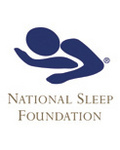Overlooked Driving Dangers Take Toll on the Roads
 |
The Vision Council and National Sleep Foundation Launch Effort to Promote Driver Safety
WASHINGTON, Aug. 22, 2008 - With more than 30 million Americans expected to hit the roads this Labor Day weekend, there's much more for drivers to worry about than high gas prices and congested highways, warns The Vision Council and the National Sleep Foundation (NSF). The organizations are joining forces to educate the nation about two under-recognized driving hazards, poor vision and drowsy driving, that are just as deadly as poor road conditions and drunk driving, especially at night.
According to a recent survey, Shedding Light on Driving in the Dark, respondents complained of eyestrain (38 percent), dry or tired eyes (34 percent), fatigue (25 percent) and an inability to focus (18 percent) while driving at night. In addition, both the National Highway Traffic Safety Administration (NHTSA) and the National Safety Council cite the fatality rate at nighttime (6:00 P.M. - 6:00 A.M.) to be three times higher than the daytime rate.
More than 11 million Americans have uncorrected vision problems, which can significantly diminish their ability to drive safely. And, since 85 percent of the information needed for safe driving is visual, regular eye exams are an important part of driver safety.
"We rely on our eyes every time we step into a car, especially our peripheral vision, depth perception and focusing skills," said Ed Greene, CEO of the Vision Council. "This link between vision and driving makes it essential for motorists to take steps to maintain healthy vision, just as they take other safety precautions on the road."
In addition, the 2008 Sleep in America Poll found that 64 percent of drivers who work at least 30 hours per week report they have driven a vehicle while feeling drowsy in the past year, and more than one-third, 36 percent, have actually fallen asleep at the wheel. Sleep-related crashes are most common in young people, especially men, shift workers, commercial drivers, and people with untreated sleep disorders. NHTSA conservatively estimates that 100,000 police-reported crashes are the direct result of driver fatigue each year. This results in an estimated 1,550 deaths, 71,000 injuries, and $12.5 billion in monetary losses each year.
"Most people are aware of the dangers of drinking and driving, but are unaware that driving drowsy can be just as fatal," said Darrel Drobnich, chief program officer at NSF. "In fact, traffic safety and sleep experts believe that drowsy driving is much more common than even federal statistics indicate."
Recent research finds that even a single night of sleep deprivation can negatively affect a driver's ability to coordinate eye movement with steering a car. And, like alcohol, sleepiness affects your vision, slows reaction time, decreases awareness and increases your risk of crashing.
To improve driver safety during this holiday weekend, the National Sleep Foundation and The Vision Council offer the following tips for enhancing vision and preventing drowsy driving:
-- Get regular comprehensive eye exams from an eye doctor. Many serious and progressive eye diseases do not have noticeable symptoms. An eye doctor can also ensure that your prescription is current.
-- Always wear your prescription eyewear and make sure that your glasses are clean. Cleaning lenses regularly helps to remove dirt and fingerprints that can interfere with vision, especially at night.
-- Wear anti-reflective (AR) lenses to eliminate lens glare. AR lenses act to improve vision by increasing the amount of light that reaches the eye and by reducing harmful glare due to reflections off the back surfaces of lenses.
-- Get adequate sleep. Most adults need 7-9 hours to maintain proper alertness during the day. Make sleep a priority before getting behind the wheel.
-- Schedule proper breaks and arrange for a travel companion. Stop or switch drivers approximately every 100 miles or two hours during long trips.
-- Watch for the warning signs of fatigue. Impaired reaction time and judgment; decreased performance, vigilance and motivation; trouble focusing, keeping your eyes open or your head up; daydreaming and wandering thoughts; yawning or rubbing your eyes repeatedly; drifting from your lane; tailgating and missing signs or exits; and feeling restless, irritable or aggressive. If you find yourself rolling down the window, turning up the radio or experiencing one of these signs of fatigue, pull over at safe place immediately for a short nap or find a place to stay for the night.
For more information about vision and safe driving, or to find an eye doctor in your area, visit www.thevisioncouncil.org. To learn more about drowsy driving and Drowsy Driving Prevention Week, held in November, visit www.drowsydriving.org.
About The Vision Council:
Dedicated to enhancing life through better vision, The Vision Council represents the manufacturers and suppliers of the optical industry. We provide a forum to advocate for better vision and to promote quality vision care products and services in the global community.
About the National Sleep Foundation:
The National Sleep Foundation (NSF) is an independent nonprofit organization dedicated to improving public health and safety by achieving greater understanding of sleep and sleep disorders. NSF furthers its mission through sleep-related education, research and advocacy initiatives.


